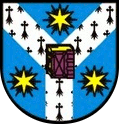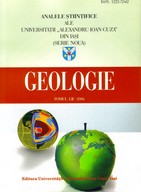
English title
- SERIA
GEOLOGIE (AUI-G) - |

|
| Log in New account |
| Home | Main Page | Guide for Authors | Peer Review | New Articles | Events | Archive | Index | Contact us |

|
Article GOLIA MONASTERY FROM IAȘI (ROMANIA) – ALTERATION AND DETERIORATION OF THE BUILDING LIMESTONES
MIHAI BRÂNZILĂ - „Al. I. Cuza” University of Iași, Department of Geology, 20A Carol I Blv., 700505 Iași, România PETRU ȘTEFAN - „Al. I. Cuza” University of Iași, Department of Geology, 20A Carol I Blv., 700505 Iași, România View abstract as pdf file | View full article as pdf file Abstract: The church of Golia Monastery is considered one of the most representative old
architecture monuments from Iasi, Romania. The monumental construction of the church
combines Moldavian, Polish, Russian and even Italian Renaissance architectural elements.
The building material is represented by Miocene limestones coming from several quarries
nearby Iasi. Calcareous rocks of different geological ages, from the Badenian to Sarmatian
(Basarabian), were exploited from these quarries. Genetically, the limestones accumulated
under complex facial conditions, specific to the foreland basins which developed on the
Moldavian Platform between Badenian and Sarmatian. The prolonged exposure of the
limestones from the masonry of Golia Monastery to the specific alteration factors resulted in
a series of effects, some more superficial, others more profound. Therefore, the microscopic
analyses of the samples reveals some data concerning extraclasts, intraclasts, oolites and
cement that outlines specific alteration processes. Keywords: weathering, Miocene limestones, monuments |
copyright © 2024 Department of Geology |